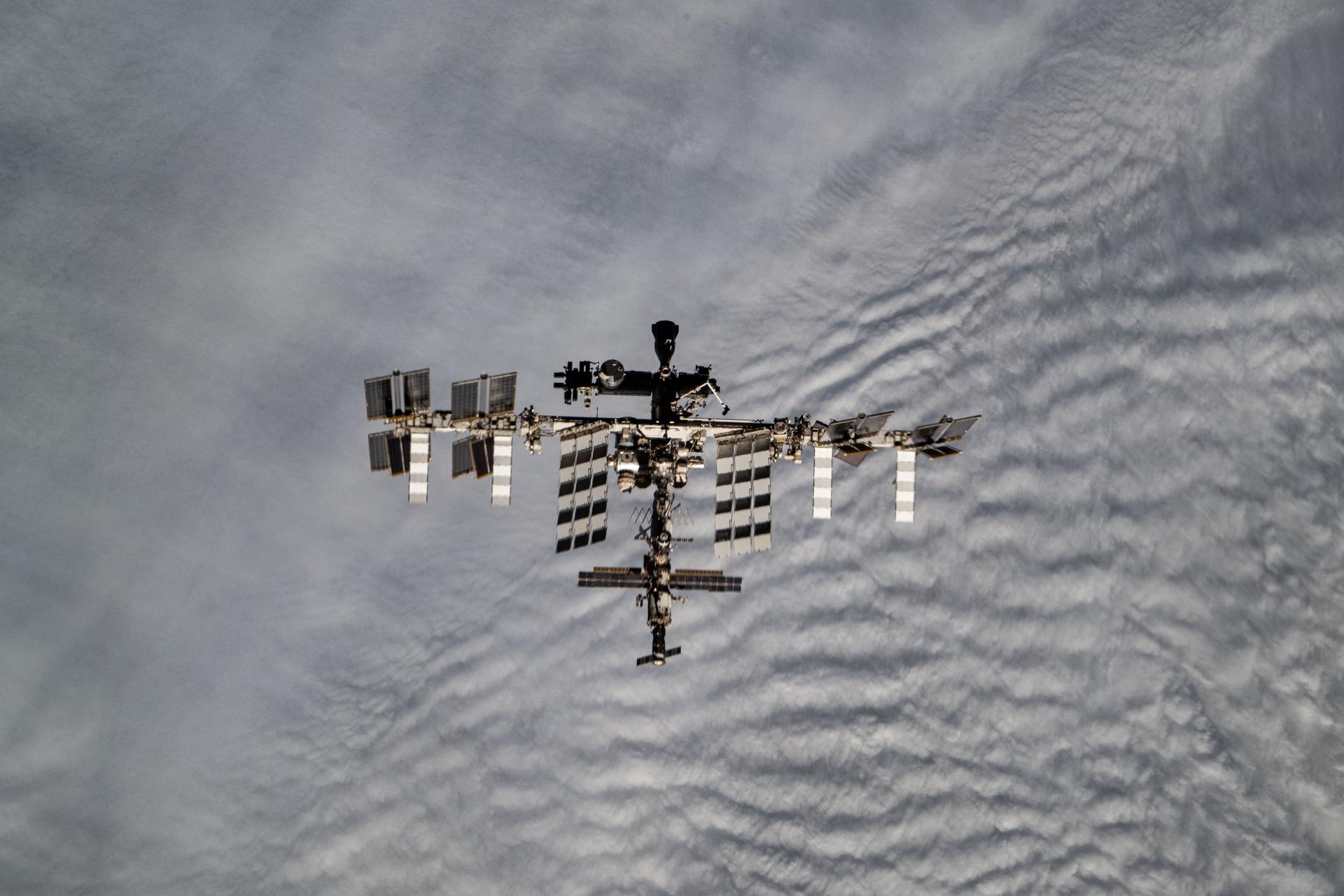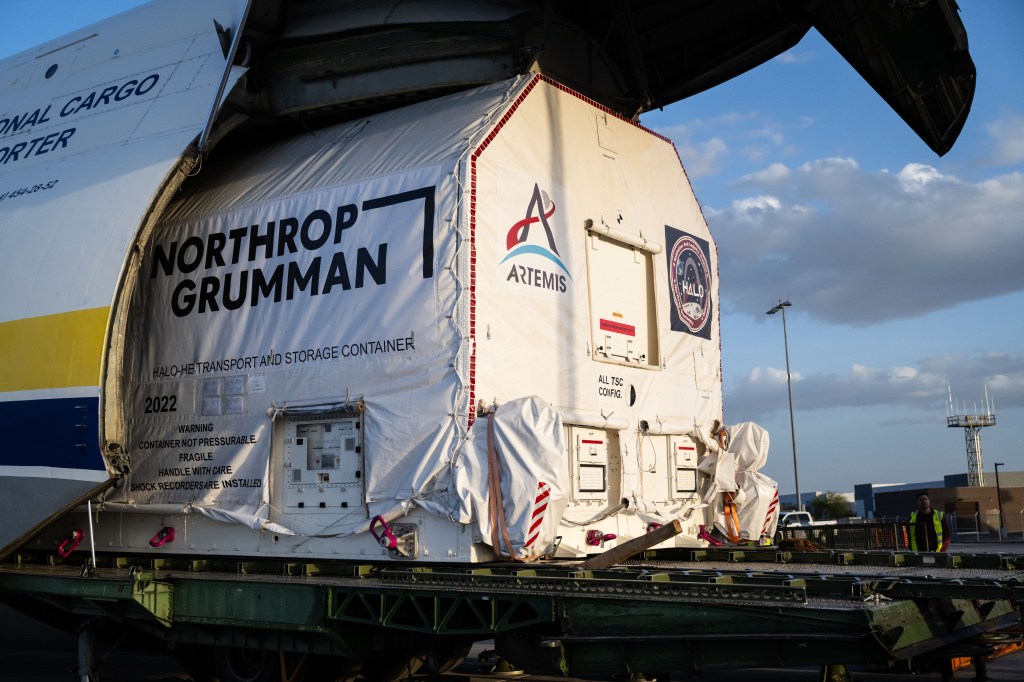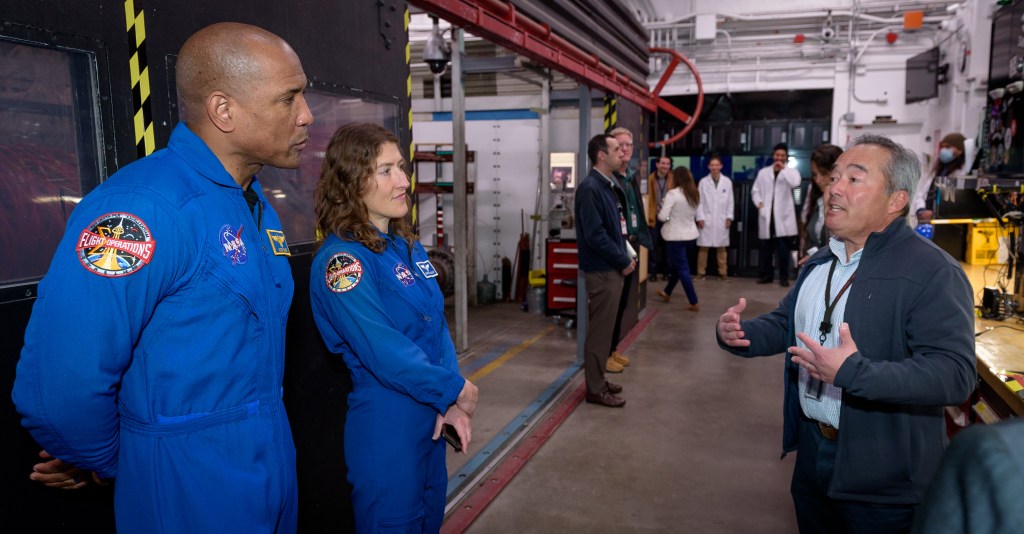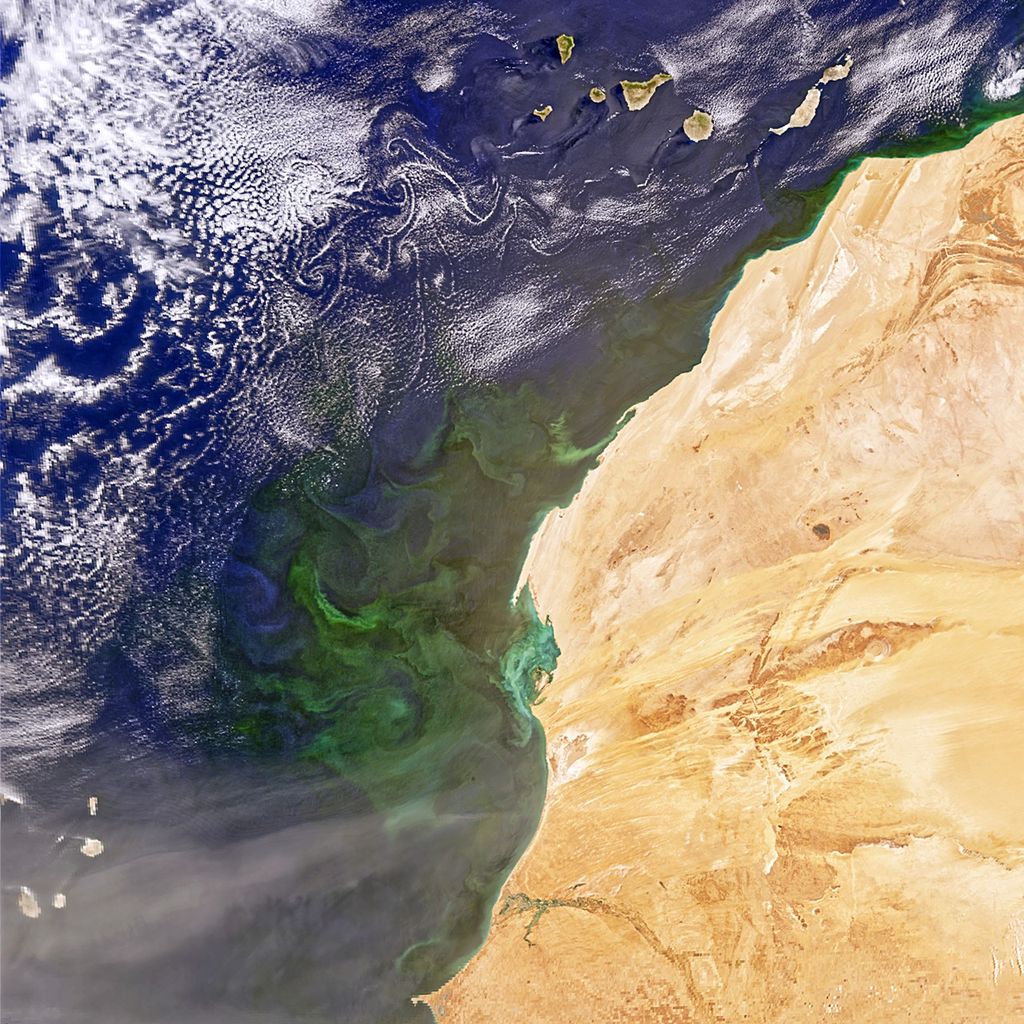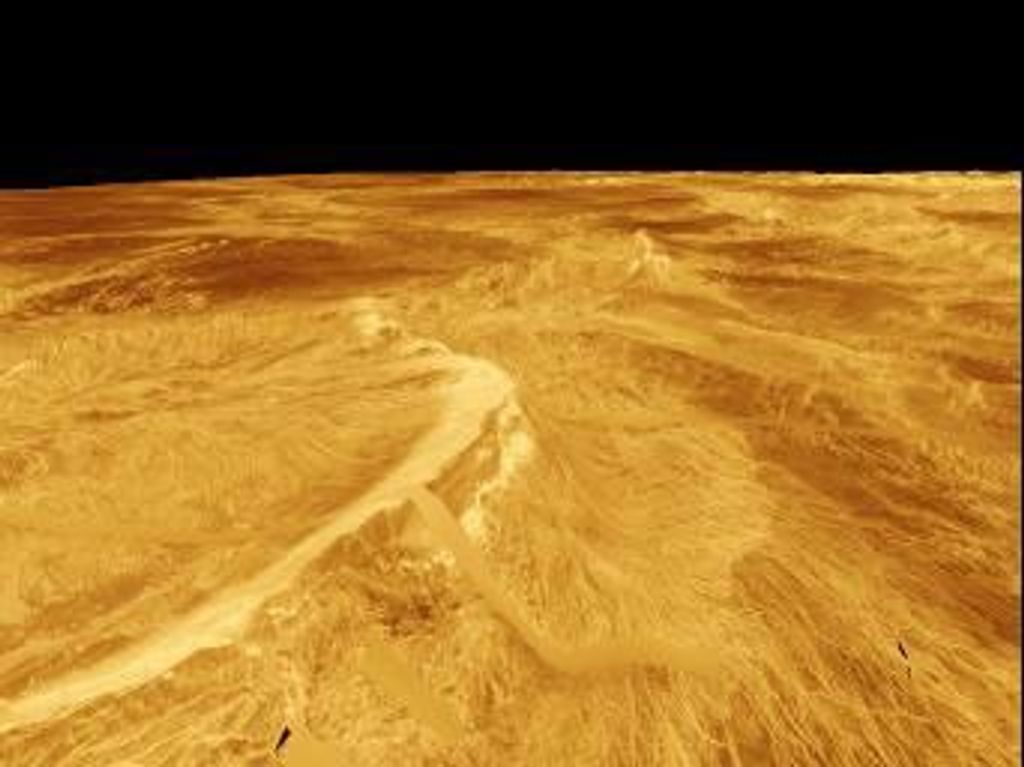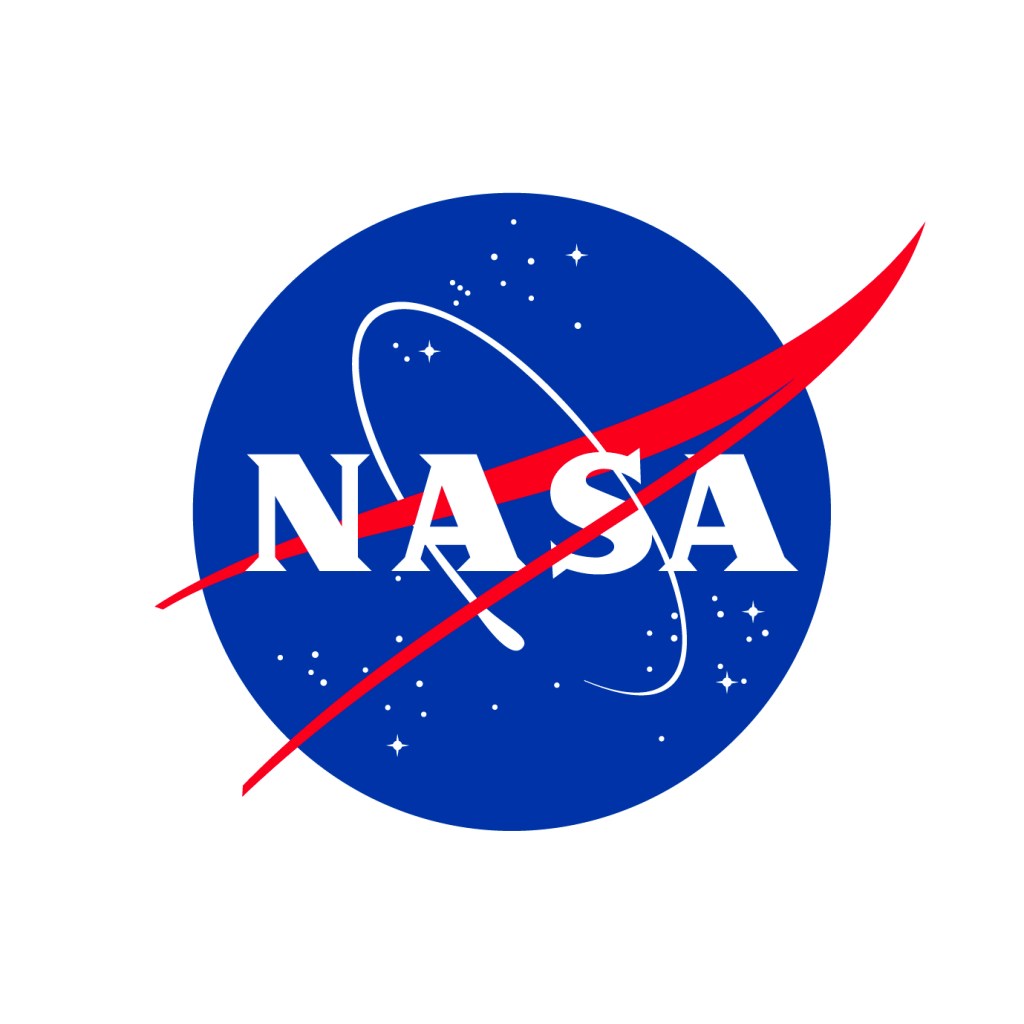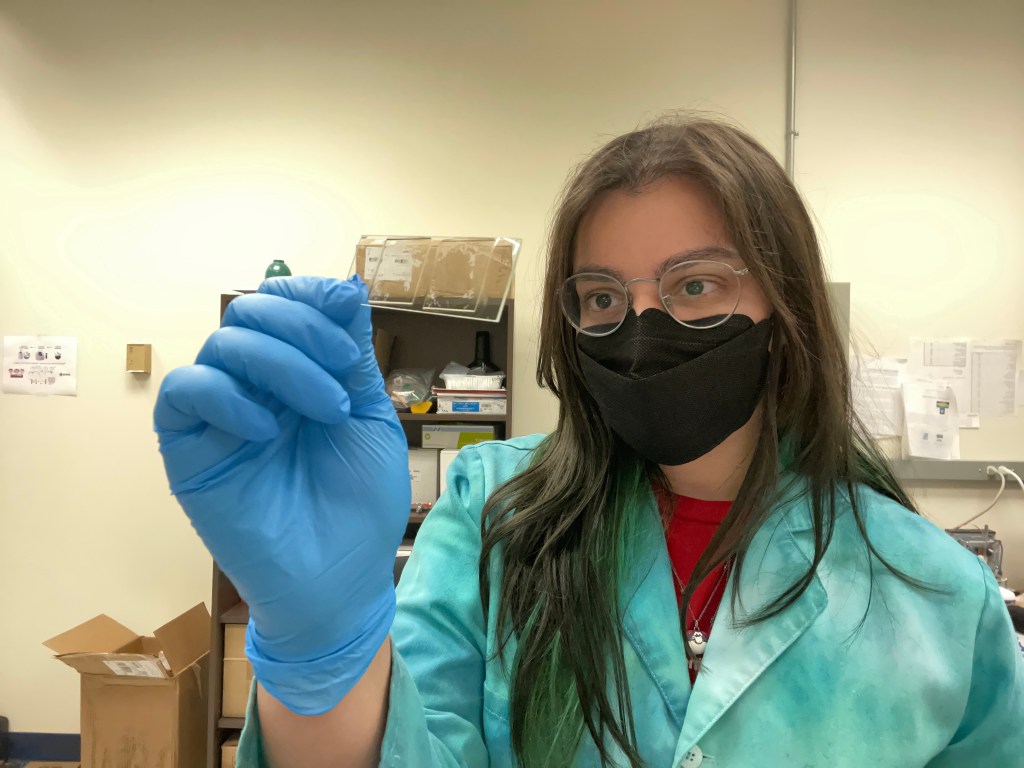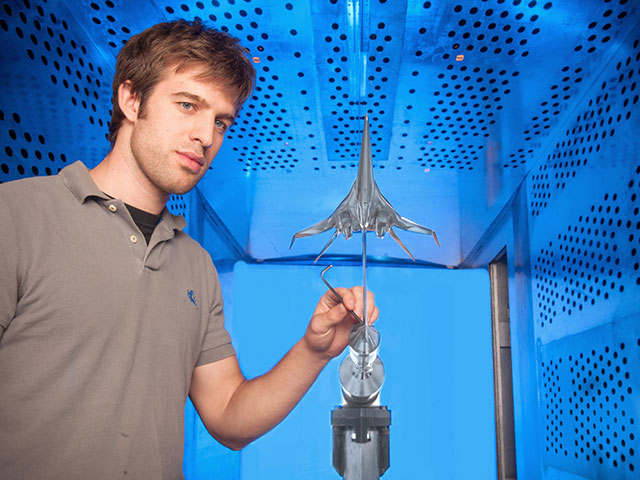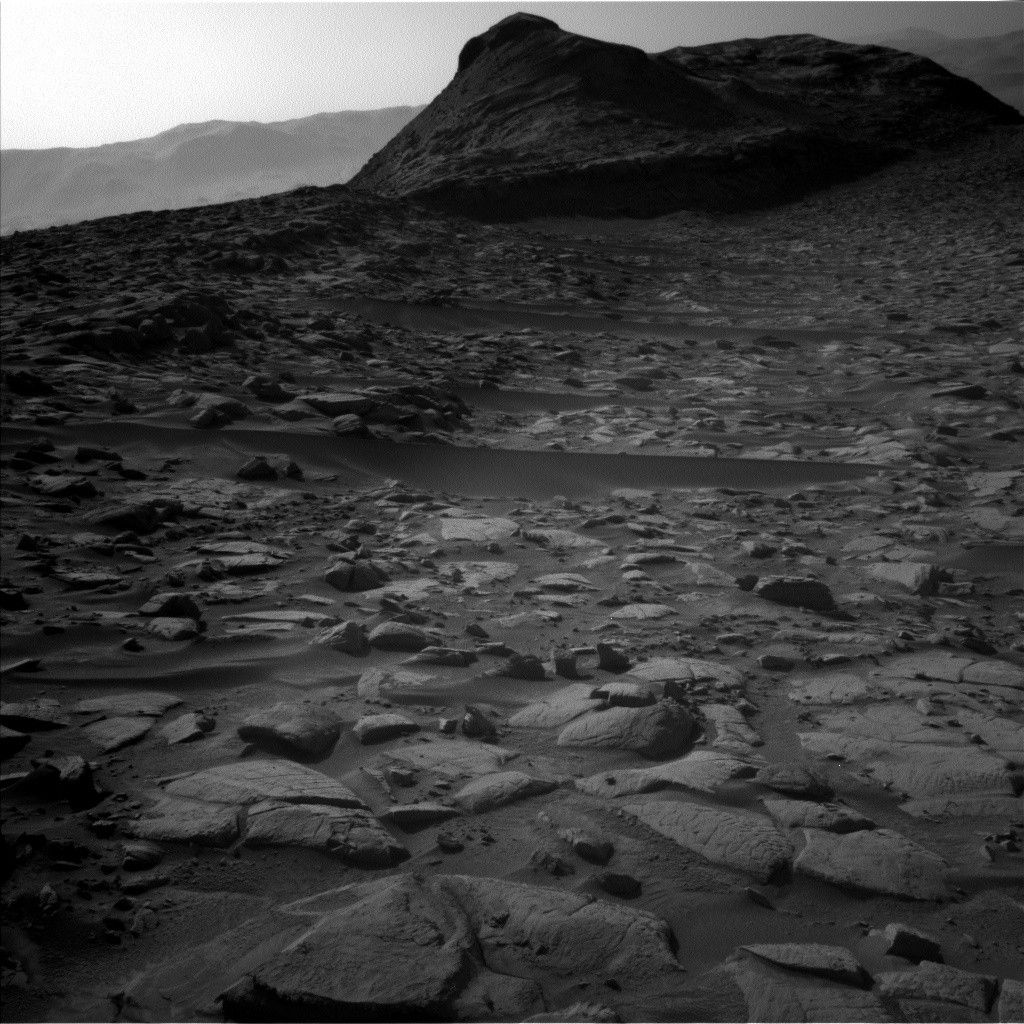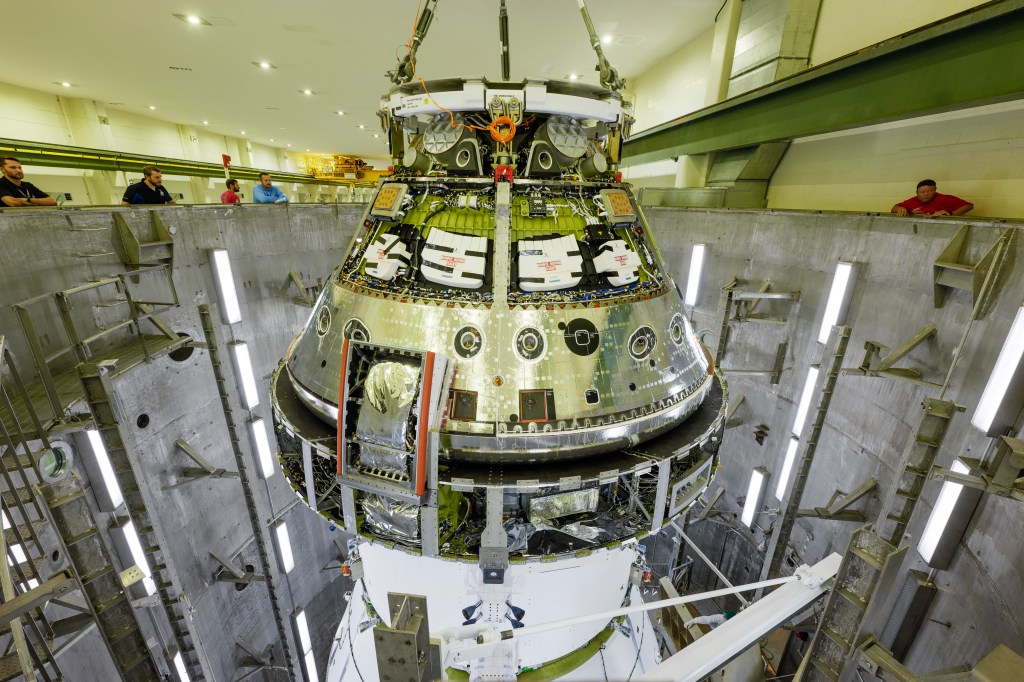
From Earth orbit to the Moon and Mars, explore the world of human spaceflight with NASA each week on the official podcast of the Johnson Space Center in Houston, Texas. Listen to in-depth conversations with the astronauts, scientists and engineers who make it possible.
On episode 379, NASA and Axiom Space experts discuss the lunar spacesuit Axiom is developing that astronauts will wear when they step foot on the Moon again during the Artemis III mission. This episode was recorded February 19, 2025.
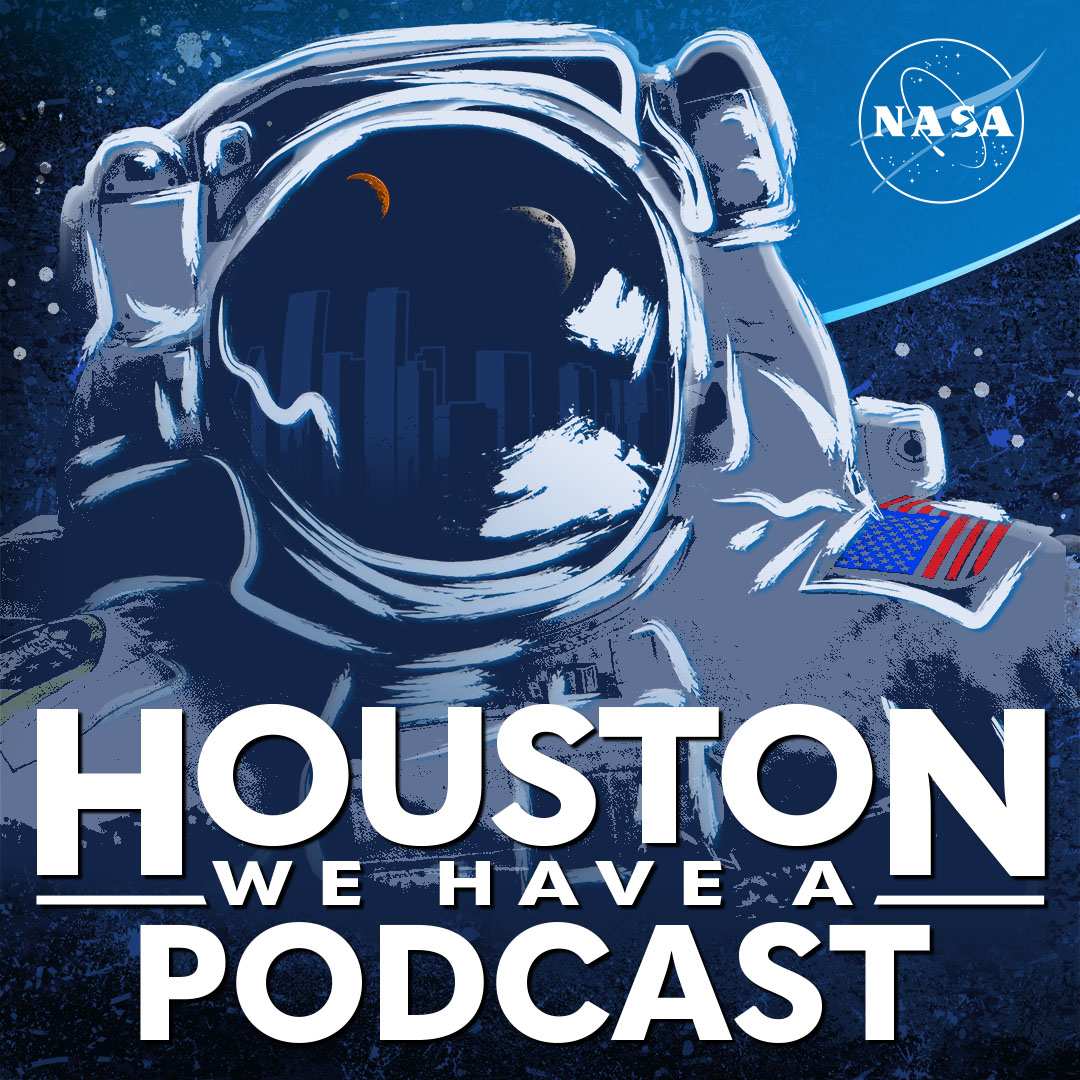
Transcript
Dane Turner (Host)
Houston, we have a podcast. Welcome to the official podcast of the NASA Johnson Space Center. Episode 379, Commercial Lunar Spacesuits. I’m Dane Turner, and I’ll be your host today. On this podcast, we bring in the experts, scientists, engineers and astronauts all to let you know what’s going on in the world of human spaceflight and more. More than 50 years ago, humans went to the moon under NASA’s Apollo program. We’ve all seen photos and video taken of the astronauts in big white suits hopping around on the lunar surface. These suits got the job done, allowing the astronauts to conduct the science they were tasked to do, and we learned quite a bit from the Apollo astronauts on how to improve suits for the next time humans set foot on the lunar surface, with humans exploring the lunar south pole for the first time during the Artemis III mission, astronauts will need new suits on the cutting edge of technology. The new space suits will enable astronauts to conduct extensive Lunar Science, while providing increased flexibility, mobility and safety like never before, to withstand the harsh environment of the lunar South Pole, leading the way to develop the tools of the Artemis surface missions is NASA’s extravehicular activity and human surface mobility program, or EHP. They are working with us commercial partners to develop spacesuits, lunar tools and lunar rovers. We’ll explore each of these priorities with the program on Houston, We Have a Podcast starting with today’s episode on the space suits. On this episode, we have NASA’s extravehicular activity, or EVA development project manager, Jesse Buffington, and the Executive Vice President and EVA program manager at Axiom Space, Russell Ralston, to tell us more about how Axiom Space is developing the Axiom Extravehicular Mobility Unit, or AxEMU suit that Artemis astronauts will use when they step foot on the Moon again during the Artemis III mission. Let’s suit up.
thank you so much for coming on. Houston, we have a podcast today.
Jesse Buffington
Thanks for having us.
Russell Ralston
Yeah, thanks for having us.
Dane Turner
Can you guys tell us a little bit about yourselves? Where are you from? Where’d you go to school? And you know, how’d you get to be in here today?
Jesse Buffington
Absolutely. So I grew up in Arkansas, in a very rural part part of the state, on a farm, and grew up working with my hands, doing farm work and electrical work for family members who own their own businesses. I went to the University of Arkansas, and I studied mechanical engineering and physics, and as an undergraduate, I interned with NASA and the early 2000s and I joined the NASA team full time in the fall of 2005
Russell Ralston
I had a similar background to Jesse. I grew up in north, north Georgia, rural town with lots of farming and other things as well there. So after that, moved to Atlanta to go to Georgia Tech, where I studied mechanical engineering for undergrad, and then stayed got my Master’s in aerospace engineering. When I was at Georgia Tech my freshman year, I ended up interviewing for a co op here at JSC at the time, I think it’s called the Pathways Program now, but back then, we called it the Co op Program, and got that right after freshman year, and did the Co op program all the way through grad school, and then landed after that here and at JSC, actually at EC five. So got to be spacesuit Engineer here at JSC, and test subjects and those kinds of things, which was really a lot of fun, of course, as you can imagine. And then, then a couple years ago, joined, joined axiom,
Dane Turner
awesome. So Jesse, you’re NASA’s extra vehicular activity development project manager, what does that really mean?
Jesse Buffington
Great question. So within the agency, we have a program called EHP, or the extra vehicular activity and Human Service mobility program. So EHP, for short, the EVA development project is one of three hardware or flight development projects in that program. So my sibling projects are our lunar terrain vehicle or LTV and our pressurized rover or PR project, which is a partnership between NASA and JAXA. So I manage the EVA development project team. That includes our oversight of the XE VAS contract, which the axiom team is our prime on. It also includes some non prime projects, supporting equipment modifications to the spacecraft to basically interface with the space suit, and then the overall day to day operation of integration with the test facilities, our risk mitigation activities and everything that’s required to safely and effectively fly the mission. For Artemis III and beyond,
Dane Turner
and Russell, you’re the executive vice president at EVA program manager, axiom space. What does that all entail?
Russell Ralston
Yes, that’s right. So essentially, I run a lot of the teams at axiom that does anything in the EVA world. So Extra Vehicular activities, space walks, anything, anything with that. The vast majority of that scope and content is the XE VAS contract. So that’s why we work a lot with Jesse and EHP. We have some other ancillary things as well, but most of it’s focused on developing the space suit, the EVA tools for the Artemis missions, ISS and also axiom station. So we also have a small, a small commercial side that looks at the future of EVA on the commercial station side,
Dane Turner
very cool and Well, let’s start off with an overview of this space suit. Can you tell me about the new spacesuit?
Russell Ralston
Sure. So this the suit is, basically what we what we call next generation spacesuit. It’s based off of the former xEMU design which I worked on, you know, Jesse. And Jesse led the project back a couple years ago. So the architecture is very similar to that, but essentially, through the design process and through the kind of maturing of the design, we refine certain elements and things like that. So this is a, this is a new spacesuit that’ll have, you know, more mobility, more capability, better safety, all those kinds of things. I’m sure we’ll get into the details of that, but, but overall, it’s, I think, in my opinion, at least, it’s a huge step forward in terms of spacesuit capability.
Jesse Buffington
Yeah, I’d add to that, you know, we, we had developed a government reference design called the xEMU, and our strategy there was to make sure that there was at least one way to close a design and show that the government’s needs could be met. So we have different needs today than we had, you know, in our prior exploration campaigns, exploration program. So going all the way back to Apollo, those suits were built for a very, very hyper focused, unique scenario where the crew would walk onto the launch vehicle wearing the same garment that they would then conduct their lunar surface EVA in so that put certain constraints on it, like it couldn’t have hard elements in it, mobility elements that would allow them to move easily, because those same hard elements could injure them in a launch entry abort scenario. So that’s what leads to certain things like bunny hopping on the lunar surface, and it puts serious challenges on the size range people you can fit, and the duration of the EVA that you can do, how much work you can get done. So we’ve tried to address all of those by having an architecture that is optimized for EVA that is separated from the need to survive a launch entry abort scenario. That’s why we call it basically a two suit architecture, where the vehicle providers now deliver their own launch entry abort suits that the crew wear during launch or during re entry to earth or dynamic operations in flight. And our EVA suit can be optimized for use, you know, in productive work outside the spacecraft. So that’s that’s a pretty profound departure from our history, but it’s not totally radical. Our current space suits on ISS today are optimized for EVA. The crew don’t wear those whenever they launch and re enter. So we’re basically building upon, you know, the evolutionary path that space walking has taken in the first, say, 60 years of human space flight.
Dane Turner
So you say you’re taking a little bit of a design departure from what they were doing with Apollo, for multiple reasons there. So what kind of capabilities are you looking at for this that are going to be very different from Apollo? Yeah,
Jesse Buffington
NASA’s got some pretty significantly different needs in this generation of exploration. So one of NASA’s profound needs is to open the envelope for the size of human being. We can not just put in the spacesuit, but give them a quality fit and so that they can perform work both effectively and without an elevated risk for injury or an elevated level of fatigue that takes to do the job safely and effectively. So we’re broadening that size range and the ability of the garment to actually fit a person with a high quality fit. We’re also working towards longer EVA duration. So we instead of, you know, having a very, relatively short timeline and a relatively small amount of time that we can abort in if we have a problem, we want a longer nominal duration. A lunar surface EVA and we want more contingency capability so that if we run into a problem, if we have a failure or an unexpected event, that we have more time to figure that out, and that More time equals a greater safety posture for us. So those are some examples of what’s different. Other ones are equally profound. We’re looking for a greater level of autonomy from the crew member, the ability for the crew member to understand where they are in that complex terrain, the ability for the crew member to interact with the space environment that has even greater extremes than the lunar equatorial missions of the Apollo era. On the south pole of the moon, we have what’s called permanently shadowed regions. Those are much colder than we are typically used to experiencing or coming into contact with. So that drives some serious engineering challenges, where it makes us open up the performance envelope of the design solution, so that we not only fit more people, we also can do so in a much more aggressive environment, and we can do more and higher quality work for a longer duration EVA. All of those things are interconnected, and as we grow each corner that envelope, it really forces the design to expand with it, so that we aren’t so narrowly confined to, you know, an overly constrained situation or capability.
Russell Ralston
Yeah, I think Jesse covered, covered most of it. It’s a, as I mentioned before, it’s a pretty big step forward, right, in lots of different ways and lots of different ways and lots of different capabilities. Maybe the only thing I would add, just from a slightly different angle, is there’s a lot of alignment between kind of these new needs and goals for exploration, as well as like what what we at axiom would use for commercial applications. So as an example, if you want to fit a broader range of crew members for exploration missions, that helps us open up the aperture for, say, private people flying and doing EVAs or things like that in the future. So in general, fitting more people in suits is a good thing. So, so a lot of this is kind of, there’s some mutual alignment there, and we’re trying to make a spacesuit that is more accommodating of more people, and easier to use and all and just safer in general, and all those things. So, yeah, I think, I think this is a kind of a great, great way that this can align between the exploration needs and goals and what we’re looking for as a business.
Dane Turner
You’d mentioned that the lunar South Pole presents itself with some unique challenges due to the environment there? What are some specific design choices that you’ve been making for this suit, or maybe some technologies you’ve used to try and help with that?
Russell Ralston
Yeah, you’re right. So the South Pole is a particularly challenging environment. There’s a couple there’s a couple of big drivers. You know, one of them that Jesse mentioned is the temperature range in the permanently shattered regions and things like that. So we have to look at what kind of materials we put on the boot, what the design of the boot is. There’s been a lot of work on the boot for many years on different projects for to help make sure that when you know when the crew members inside the spacesuit, they’re comfortable and safe and all those kinds of things, so that they can focus really on the job that they have the do, not all these other things. And so that’s one, that’s one example. Another one would be, you know, when you’re doing, say, a spacewalk at the South Pole the moon, you’re actually in, yes, you’re in a vacuum, but you’re also kind of in this plasma charged field. So one of the things, one of the features and designs we’re putting in the suit, is bonding all the way, basically every single element of the suit. It’s kind of a complicated topic, but essentially, we have to make sure that all of the metal elements of the suit are connected together so that we don’t build up charges across the suit to create shocks or hazards or things like that,
Dane Turner
like stack electricity type
Russell Ralston
kind of like that. Yeah. So, so there’s, there’s, when you get into it, it becomes pretty complicated pretty quickly. But all of that is there all those features are there to make sure that, one, the astronauts safe, but two, that they can focus on science activities that they want to do, and all the other things not, not have to worry about any of these environmental factors. So
Jesse Buffington
You know, there’s a couple other ones that come to mind too. Um, you know, we have become almost, you know, used to the energy density that we can get out of lithium ion batteries now, but this latest generation of chemistries that are available, we have not, you know, yet, flown in a in an EVA suit. So you guys are investing in that, and that’s a profound step function, or increase in the level of capability that you can bring to the table, you know, and try to operate the suit, you know, at even more extreme scenarios and still have the power to run for a full duration. EVA, I think other things that that axiom has adopted, that that supports NASA’s needs. You know, we’re we’re interested in expanding, in expanding our traverse range, but that creates communications capability challenges. So we’re adding basically cell phone like technology to the suit, so that it can communicate not just the bare minimum amount of data, but actually a surplus or a large amount of data, all the way back to the lander, including, like high definition video over a greater range, in addition to voice and in addition to the suits telemetry, that way the taxpayer gets a better view. You of what is happening on the lunar surface during those first EVAs. There’s other more subtle things that are inherent in the suit, for instance, like we exploit the vacuum environment of space as a feature or a resource that we can use to regenerate the carbon dioxide removal system. That’s a that’s a fairly novel thing that has not yet flown in a spacesuit, but we basically recharge a CO₂ removal bed by exposing it to vacuum temporarily and removing the carbon dioxide that the human body exhales. So so that’s basically using the vacuum of space as a accessible utility that allows us to close the life support system without as much overhead or consumables as other technologies previously did. That’s a pretty, pretty interesting way of like exploiting the very environment that is hazardous to you to your advantage.
Dane Turner
You sublimate the CO₂ away, just into vacuum?
Jesse Buffington
Essentially, that’s a chemical and mechanical process that allows the scrubber to pick up the CO₂ while it’s connected to the ventilation loop of the suit, remove a certain amount of the CO₂, and then when the bed is saturated, a series of valves closed that expose that saturated bed to the vacuum of space, and it reverses the pressure. Delta CO₂ is then essentially removed from the bed, and it regenerates or then becomes available to pick up new CO₂, and the cycle repeats itself with an alternating set of beds, back and forth, back and forth, so that the crew member is constantly getting a very high quality ventilation stream, but we’re constantly able to maintain the lowest possible inspired CO₂, despite the level of work that they might be doing. They could essentially run a marathon. We could keep the level of CO₂ in the suit down to like at or below, like environmental standards on our surface.
Dane Turner
That’s fascinating.
Russell Ralston
Yeah, there’s some, there’s some pretty cool technologies in in this new design, just Jesse touched on. One of them, the CO₂, of course. But also this the cellular capability we’ve we’ve partnered with Nokia to help develop that and add this, basically for 4G LTE type solution to to the suit and leverage their expertise in that particular field to modernize, essentially the space suit design. I think folks have probably also heard me, and we’ve partnered with Prada in certain ways to enhance the fabrics of the suit and soft goods and design of all of that. And one other thing that’s probably worth mentioning is inside the suit. You know, a lot of the space walks that will be done on the lunar surface will work will require more effort from the astronaut, because they’re not floating, they’re walking on another planetary body, even if it is reduced gravity. So there’s a food product inside, the inside the suit that they can eat, in addition to water that they can drink, because they’re in there for a very long time, you know, 8, 9, 10 hours, depending on, essentially a work day. It’s a long work day, and they’re by themselves. So, so we put a lot of water in the suit, but we also have a food product that they can that they can consume, and we partnered with GU Energy to develop that, because it’s essentially leveraging some like endurance athlete products that they make for marathoners or Iron Man athletes or things like that. So that’s a pretty new, I think, and pretty neat feature that’s be available to the crew inside the suit.
Jesse Buffington
You know, I won’t name them, because I think you guys have your own news to break, but you’ve also partnered with other kind of industry leading experts and other features like how you build your helmet bubbles and then how you coat them, you know, from an optical perspective, you know, the same kind of concept as other optics that human beings wear, you know, to ensure that their eyes are protected from the glare of the sun or UV radiation. So I think you know across the board, what we see happening right now is the axiom team partnering with, you know, relative other experts in the field of their respective fields. I should say that can contribute to the design without necessarily axiom having to become expert in every single one of those particularly like niche corner things that there’s other companies that have spent decades of investment becoming kind of leading edge producers and designers, and then I would say, amplifying the capability that axiom has brought to the table with those other industry leading partners and subs that are then doing the design, doing the production, doing the manufacturing. That is one other thing that you could also acknowledge is in the suit. I think one could say that, you know, just the manufacturing processes are radically different today, there’s far more computer driven manufacturing than there is, particularly on the metallic goods. You know, almost everything is built under machine control, under automation today. You know, in even just our current suit flying on ISS. Many of those parts in its in its original design, were built on manually controlled machines, which are fantastic, but it requires a longer lead time, higher skilled personnel, you know, actually operating machinery. You know, we still have incredibly skilled personnel, but there’s probably, honestly few. Fewer of them now to, like, actually machine all the parts, part for part, I would say it’s just a completely different manufacturing and production scheme. And that’s a really big deal is, you know, can you make the design? Can you get, you know, computer controlled milling machines and lathes and other manufacturing devices that can actually produce these parts because they’re, they’re not all like simple, you know, six sided cubes, common, common basic shapes. They’re very sophisticated, almost organic geometries, literally, like the hard upper torso of the suit, you know, takes the form of the human body carved out of a giant block of aluminum. You know, where we mill it inside and out to thin the walls down the cut mass. And yet, it’s a it’s a complex, three dimensional curve, and almost every facet of it. So manufacturing that is an enormous challenge, even for, like, incredibly high end machinists and the machines they run. And yet, you know, that’s, that’s something that’s fundamentally necessary, but there’s also still a lot of room for practical, hands on skill. I would say, you know, you might, you might mention, better than I but like your softness lab, for example, the incredible like personal individual skill that’s required to run sewing machines and to stitch a glove or to stitch an arm or a leg of the space suit pressure garment, that’s just a very unique and very high end technical skill. You know, that’s not something that anybody who runs a sewing machine just happens to walk in and do you know off the street?
Russell Ralston
Yeah, it’s pretty interesting. I mean, you touched on the production manufacturing spot, but, you know, most people may not realize this is the first, I’m gonna say it’s the first time, really, since the 1970s 1980s that a spacesuit has really been designed. And I’m gonna include all the prior to development work and xEMU and everything else, but, but, you know when, when this suit goes through CDR and qualification is certified, it’ll be the first time that that we have built. That’s why we call it the next generation space suit. You know, this next generation of suit and everything from the design process, the production to certification testing. It’s a lot of that has been digitized, but it’s also this interesting blend of, as Jesse mentioned, like some things have been digitized and automated, and other things just are made kind of the good old fashioned way, in some cases, because that’s just the best way to do it. When you, when you break it, break it down and look at, look at how you want to design something or produce something. You know, there’s, there’s some things that lend themselves to, like digitally modeling and in CAD and designing it that way. And there’s some things that it’s just best just to trial and error in a lab, and, you know, evolve and things like that. And a lot of our soft goods are kind of kind of that way in some cases. So it’s pretty it’s a pretty fascinating effort overall, to be doing this. It’s, I always love to give people the analogy of, imagine what a car looked like, and what it was like to design and build a car in 1970 and today, like, there’s probably an equivalent leap, huge difference, huge difference there. And
Jesse Buffington
And it’s, and I would say it’s not a trivial challenge in terms of like, is the industrial base, you know, what’s our capacity in the nation today to manufacture hardware of this type? There’s only so many folks that have the familiarity with building, you know, high pressure oxygen regulators that operate, you know, at like, say, 3000 PSI, 100% O2 inlet. There’s only so many folks that run six axis milling machines of a volume large enough to carve what is essentially an aluminum t shirt out of a out of a like 500 pound cube of aluminum. There’s only so many folks that run a vacuum chamber mounted welding machine to weld up the back plate that a life support system is mounted to. And yet, the country has those capabilities. But it is still not trivial to bring together all of those players on a schedule that is relevant, managing all of the risks and uncertainties that happen in real manufacturing. People, people run into problems all the time. You know, I run milling machines and lathes my entire life, and it’s basically become like a hobby and a passion. I can’t tell you how many tools I’ve broken because I made, you know, just a mistake. People, you know, even on the manufacturing floor, you still can make mistakes. And so you got, like, critical path parts, yeah, you can, like, break a tap off or gouge, you know, a block of aluminum or a block of titanium. That’s not great. So then you got to, like, figure out, can we salvage the part? Can we make it over? You know, do we have to start over and make it again, and just managing and planning for that real world, reality, you know, it’s, it’s, it takes not just a lot of, you know, degreed engineers, it takes an incredible amount of very skilled labor folks that have spent their lives becoming expert in operating sewing machines, milling machines, you know, test facilities, all those kinds of apparatuses, and all those skills are needed to build a spacesuit on a time scale. That’s relevant, and I think that’s one of the reasons that you know, it’s the NASA’s advantage to have our industry partners engaged in that. You know, historically, it’s very difficult for the for the government to retain large factories and machine shops and expertise across the the vast array of manufacturing processes and skills it can be done. You know, when. And there is greatest national need. It has been done in our past. But that’s not really how our economy works long term. You know, manufacturing and production is a skill that both from a individual person’s ability and the ability of a company to kind of manage overall that that is a skill that our economy incentivizes our non governmental entities to be really great at and to really hone their craft. And that’s really, you know, a big deal to NASA is to make sure that we have that motivation and that skill from non governmental entities, from from private industry, working, you know, to maximize, you know, their their capabilities and their production throughput, because then we benefit from that as well.
Dane Turner
So you’ve, you’ve been telling us about, like, all the partnerships and all the advantages those partners are bringing everything and and you were just talking about how the manufacturing in particular is something that we definitely need commercial partners for. But I do have to ask, you know, Russell, you got your start here at NASA, and we had the xEMU you for a little while that was being developed by NASA. So why didn’t NASA build this suit themselves? Why? Why didn’t they continue to design? Why did this go to Axiom?
Russell Ralston
Yeah, it’s good question. I think, honestly, Jesse answered a lot of it in his last explanation that that it’s when you look at the long term sustainability of it, right? It’s not that. And to be clear, NASA did do a lot up front, right through for years on xEMU, you we worked together to do a lot of the front R and D and things like that. But when you look at the long term sustainability, as well as just the more strategic move to a commercial space, like type environment for LEO and things like that, I think it makes sense to to hand that off to industry so that they can sustain it long term. So I’ll give you another example. One of the things that that NASA and other companies have dealt with this, but NASA especially has dealt with over time, is challenges with supply chain, because, like, you have one very niche business provide this one thing, and as long as the need is there, they provide it. But as soon as the need goes away, they go away, right? And so then next time you need that thing, you either have to stand up a whole nother company or something else, or some complex process, if you tie all these unique skill sets, like, you know, people who are very good at making gloves, and all the investment and all of the nuances of all those things that are very difficult to do, to produce and fly spacesuits. If you tie that to a long term economy, that economy drives the engine right, so that you have more stability in the supply chain. You’re producing things over a longer term, and then strategically, for the for the country you’re you’re creating a workforce that has a natural kind of incentive, right to keep to keep going and things like that. So I think that the that’s kind of a more strategic answer to your question, but really, to me, that’s how I think about it is, is we want these things to be sustainable long term, for both masses, you know, at long term exploration missions and things like that, but also for to enable this new commercial economy and make sure that the US is leading the way in that. I think it makes a lot of sense. So I don’t know if you want to
Jesse Buffington
No, I would generally agree. I mean, you can also go back to just some basic policy and strategy principles in general, there are very few, if any, places where the federal government puts itself into the position of being the sole proprietor, sole manufacturer of a given set of hardware or software products. You know, for the long term, you know, in our history, there have been some cases of that, but very few overall, in general, the way our country is set up, and the way our economy, you know, as designed to operate is, you know, where the government can find and reduce or mitigate risk and barriers to entry. We typically do that, you know, try to move out to the edge of the frontier, whether it’s air mail, you know, 100 years ago, or, you know, other, you know, burgeoning, I’d say, option opportunities in the economy. We’ve typically seen the government try to reduce risk, understand what is possible and what is credible, manage or mitigate barriers to entry, to a point where it can be turned over to the private sector or the for profit economy, and then that way that the government’s freed up to continue poking out what that next horizon goal is. In our case, you can go all the way back to the 2017 NASA Transition Authorization Act, where we laid out a plan at the request of Congress that said, Hey, here’s how we want to go pursue the development of an exploration class space suit. And in that documentation, we basically laid out a strategy that said, Look, we’ll, we’ll try to develop a reference design that ensures or proves there is at least one way to meet the majority of NASA’s needs. We’ll make that design widely available to, you know, any domestic US, entity, researchers, companies, you know, other government agencies whomever might take advantage of it in the US. And we pursued that goal under the NASA exploration EMU reference design, so called xEMU. We took that pretty far in the design cycle. And as Artemis emerged, it was, you know, identified as, hey, this is a prime opportunity to transition that reference design as always intended into, you know, the productions ready space, or a space that it at least made itself available, should a private entity or a non governmental entity want to adopt it. We didn’t require, you know, the participants or the proposers of the XEVAS contract to use it. But in the case of Axiom, they chose to adopt that design and then make it their own. That’s the other thing that I think is really important, is it was a good starting place, but there’s always more than one way to solve it. There are other equally viable suit designs, suit designs that have other strengths, you know, and weaknesses compared to the reference design NASA made available. There’s, like many problems, more than one way to build a spacesuit. But what I can say is that with the design that was made available and the way that axiom has adopted it and truly taken taken to making their own changes and optimizing it, they own that design at this point. It’s not really a carbon copy so much as you can tell that it’s lineage. It’s history or genetic input, I’ll say has has some background in the government reference design, but it’s, you know, diverging from that in ways that make it better. We’ve continued to learn in the intervening two, three years. So like I said, there’s multiple ways to make great spacesuits, more than one design that is a good solution this one, and the way it’s evolving is one of those ways. And it’s, you know, interesting to see how that family tree continues to diverge and evolve along the way.
Dane Turner
Wonderful. So how long or how far along is the space suit right now? Do you have an actual working model of it?
Russell Ralston
We have, so we, yes, we do have, like, training suits and engineering development units that we use. We also have a lot of the life support components that we’re testing and things like that. We’re basically right at the entry of CDR. We’re start, starting to to, very soon, we’ll be starting to submit a lot of those products.
Dane Turner
What’s CDR?
Russell Ralston
the critical design review. So in terms of the overall development phase that’s that’s, that’s getting I like to describe it like this, we’re in the second half. There’s still a lot of work to be done, but, but we’ve, we’ve made a lot of good progress. We’re kind of in the second half of the game. So, so later this year, we’ll be getting through that milestone, and then next year moving into the qualification phase, which is a lot of testing and analysis and design and things like that to verify that you’ve met all your requirements and those kinds of things. So we’re pretty, pretty good ways into it, but, but definitely have some work to go
Jesse Buffington
And I would say you guys are ramping up production too, right? So building dozens and dozens of copies of gloves, for example, all the sizing hardware to fit check, all the active duty crew members in the NASA astronaut core, you know, building out more options for different length arms and legs and different hard upper torso sizes. So I mean, right now, how many, many pressure garment assemblies could could we assemble at one time?
Russell Ralston
I think I got like five at this point. Across. Could be six, depending on how you kind of but, yeah, probably five right now, across all the different the training elements and things like that. But Jesse’s right, we’re producing a lot, lot more quantities that’ll that’ll expand that so there’s, there’s a, from a design perspective, I’d say the design is pretty well solidified. We’re refining some of the lower level details, if that makes sense. It’s real detailed design. Now, at this point, architecturally, things have settled and that kind of thing. But,
Jesse Buffington
and I think we will hear literally, over the next couple of months, because you guys bring online more and more components, we’re trying to get to the place where we we could operate, what any, any two pairs of crew up to, like three events in Simo, so like six pressurized suits operating in two or three different facilities on any given day of the week, trying to create our throughput that allows for if you think about what we’re trying to do is we’re trying to make the very first steps out the door on the first Artemis lunar surface, EBA. We’re trying to make those minutes, those hours, a minority of our experience up to that point. You wouldn’t want to buy a car and have the folks that built it say, Hey, by the time you get home, you’ll have more experience in it than the folks who designed it. You’d really like to know that the people who built the car had an enormous amount of experience that your drive home was, you know, a, you know, a fraction of a percentage of their lived experience, that they were that, in other words, that they had that much confidence and experience and the hardware they were providing. So we’re trying to create that same phenomenon for our astronauts, our engineers, is their first steps out the door. Should not be, you know, a dramatic percentage of our joint or mutual experience up to that point in time. But what that really means is we have to be able to ramp up production. We have to put together hundreds or even. 1000s of hours of pressurized suited test time in all these different facilities, whether it’s vacuum chambers or gravity offload systems. So we we need to drive up the end number and both from a safe from a safe perspective and a quality perspective of good, good hours of pressurized tests, where our engineers can observe all the unique hiccups and characteristics that any design is going to have. They’ll be in there. You just have to find them. And the way we find them is by accumulating a not trivial amount of test and experience time, you know, operating together in relevant environments.
Dane Turner
So talking about testing, I’ve heard that you guys are using a lot of NASA facilities to test these suits, including vacuum chambers and the NBL. So can you tell me a little bit about what kind of testing is going on?
Russell Ralston
Sure, yeah. So we use a variety of facilities for testing for all different purposes, right? So much of the testing, say, to date, has been done in axiom facilities and labs and in different cases like that, where we’re quickly iterating through, say, questions and design iterations and things like, things like that. We’ve been in the Argos facility. We’ve been in, we’ve done some unmanned run in the NBL. We will be going into vacuum chambers as part of the qualification run, both axiom vacuum chambers and NASA vacuum chambers. And we’ve done some pretty I think we’ve done some pretty cool tests so far. One of the cooler ones, I think, was we took the suits out to Hawthorne, California, and did a joint test with SpaceX and their airlock mock up with with two crew and their elevator mock up and things like that. So there’s been a lot of really good, I would call low and medium fidelity testing to this point, and now it’s really about upping the rigor of those tests and the fidelity of those tests, and that’s where a lot of these unique facilities will come and come in handy, right? Like the NBL and the vacuum chambers, where you’re starting to really increase the rigor of those tests that, you know, it’s not about design iterations anymore. It’s about, you know, vetting the design that you have to know that you’ve met your requirements. It’s safe learning, it training people to use the design and things like that. So it’s kind of, I think we’re kind of at a pivot point where we’re starting to shift more into that, that that nature of testing. I don’t know if you want to,
Jesse Buffington
I would agree. I mean, I think we’re on the cusp of a a dramatic increase in our test throughput and a dramatic increase in both the, I would say, quality and rigor of the testing in terms of, or maybe, maybe a better word is fidelity and rigor. Because I think what we’re going into is environments that are more and more flight like in terms of, you know, Russell mentioned Argos, the Active Response Gravity Offload System. It’s basically a robotic crane that we can suspend crew members from. It offloads them to basically predetermine gravitational equivalent, right? So we can dial in, say, like lunar surface 1/6g equivalent, and practice walking, practice doing tasks. So we literally just finished a test ratings review. I talked to the TRR chair yesterday night, actually, and she confirmed, yeah, they had finished the Test Readiness Review. Think on the schedule for here in I think, the next four business days, we start doing engineering runs, and then some of the four score runs where we’re basically characterizing axioms, pressure garment, its mobility, its fatigue, its dexterity, its ability to support the crew member doing tasks. So we’ve got, I think, probably several dozen runs scheduled in the Argos facility over the next two to three months. At the same time, we’re preparing to execute Test Readiness reviews for the Neutral Buoyancy Lab for the NBL, we’ll do both partial gravity and microgravity. NVL runs in there probably dozens of those over the next six to nine months. That’ll lead into training development with our FOD team members from flight ops, who are planning out literally the lessons and the classes and the training runs that they will use to then turn around and train the Artemis III crew that will require dozens of runs in 20 late 25 and early 26 to then actually be prepared to execute the actual training events with the flight crew and their backups. We have vacuum chamber runs. Russell mentioned that, and there’ll actually be multiple vacuum chambers. So we’ll use the JSC, so called 11 foot, and it’s a vacuum chamber over in building seven, human rated. We’ll put the suit in there, and we’ll test it both uncrewed and crewed. It’s actually a part of our critical design review review. We’ll do that here in early 2026 we’re resurrecting Chamber B, which is the largest human rated vacuum chamber in North America, and we’ll basically use that to qualify the suit at thermal extremes, while also at vac we’re renovating it to create an air lock mock up so that in the crew lock of the chamber, we can basically practice all the steps that would be necessary for the crew to operate the starship or Blue Origin or pressurized rover or gateway air locks. So it’s basically a multi air lock build out of the facility, so that we can basically practice to ensure that the first time our crew go to vacuum in the suits and operate air lock like controls is not in space. We don’t want the first time they see those conditions or go through those steps operating the suit or the vehicle to actually happen. You know, in flight, we want them to see and feel and experience all that before they leave Earth. So that takes these very unique facilities between Argos, the NBL, the vacuum chambers, all those things to come together so that the crew can experience it, so that the engineers can build their confidence and their their their competencies and capabilities, so that when they’re on console and they need to make calls in a confusing moment or a moment of kind of greatest importance, they can do it with with absolute confidence.
Dane Turner
We always hear, train like you fly here on on Houston, we have a podcast, so it’s good to hear you guys are training like they’re planning to fly.
Jesse Buffington
Yes, yeah, yeah. It’s a profound need for us. I mean, we, we operate literally in a vacuum for those eight or so hours. The margins between, you know, enormous success and catastrophic failure can be somewhat thin. We want to ensure that for the risk takers that have put themselves in that environment on behalf of the country, that they know that what’s standing behind them is a team that is very confident in both the training we’ve given them and in the hardware that they’re operating on our behalf, and that they’re confident in our calls, and that there’s a significant amount of experience that goes into building that joint team so that by the time they arrive at that ultimate moment, that we know that we can make the right calls together. And like you said, train like you fly is enormous aspect of getting to that point of supreme confidence.
Dane Turner
So we keep talking about Artemis III. Is that the first time that this suit is planned to go to space?
Jesse Buffington
I think that’s our likely first, first flight delivery. It really depends on the schedule. As we watch the transportation vehicles, you know, we launched these suits on the lander as cargo, separate from the flight crew who will launch on a ride. So that’s a little bit different than Apollo, but it’s very similar to what we do today on ISS where the suits are launched on uncrewed cargo vehicles, and they rendezvous with station, one increments worth a crew, move the suits over and basically put them in stowage and maybe the next increment of crew over the ensuing five, six years, use those suits starship and our dual launch campaign with Artemis III are kind of similar in that those suits will leave Earth on a cargo vehicle, the lander, and the crew will leave Earth on a crewed vehicle, Orion, and then they’ll mate Up in lunar orbit and actually conduct the descent and then be used on the lunar surface together. It’s possible we could get some microgravity checkouts in starship in lunar orbit before we commit to the descent. That’s certainly a risk mitigation that we’re extremely interested in. It’s also possible that we could get some risk mitigation by flying the suits to ISS prior to the Artemis III mission, and we could get some reduction of our uncertainty and an increase in our confidence prior to those first lunar surface EVAs by doing that, but that really just depends on the timing of the mission and the availability of the different launch windows.
Russell Ralston
Yeah, the only thing I’d add is there was some intentional design behind the suit architecture, so there are very little changes that we have to make from, say, an Artemis mission to an ISS mission or microgravity mission. And it allows this kind of flexibility, where, if you were designing two independent suits for both missions, you would be tied to whichever schedule of that suit. You know, you’re tying that mission to that, that individual suit development effort. In this case, we’re tying both to a single effort. So so while challenges can have impacts on both missions, it also adds the flexibility of this. Once the suit is ready, it can fly anywhere, depending on the need and the availability and things like that. So so hopefully that, you know, we’ll maintain all of that flexibility as we go forward and and that should make the planning space a little bit easier. I think, yeah,
Jesse Buffington
I think, I think that’s one of the things that is a strength is that we don’t have to go anywhere else before Artemis III. There’s smart things we could do that may reduce our risk, probably will reduce our uncertainty, but there’s also things we can do on Artemis III proper, before even committing to the descent, that can achieve similar outcomes as well. So it’s a pretty flexible mission space right now, and as the manifest evolves, as the mission or the agency’s needs evolve, we can flex to that without having to start over, redesign the suit or build, as Russell said, completely different copies that are optimized for different purposes. There’s that’s one of the strengths of having a design that is, I think, similar or multi mission compatible. You know, it doesn’t have dramatic changes between microgravity and partial gravity, that’s a big advantage, and build the same serial numbers that we can send to the lunar surface. We could also operate in microgravity. That gives us a lot of options as the as the manifest or as the mission priorities evolve.
Dane Turner
That’s really cool. And looking beyond Artemis III are there plans to use the this suit on on future missions?
Jesse Buffington
absolutely. So the way we set the exploration and EVA services, or xvas contract up, which is the contract that the axiom team is on with, with NASA for Artemis III, it’s, it’s what we call task order driven. Basically we put together task orders or TOs for each mission or service period that we need. We would basically build, you know, a task order for every subsequent Artemis mission. Right now we have the axiom team on TOs for Artemis III and for an ISS microgravity demonstration, or micro G checkout, as we call it. But yeah, we would basically put together additional TOs on that same master contract for Artemis four, Artemis five, and basically work through that process, mission by mission or in batches, as appropriate, if we want to do a bulk buy. But yeah, the intent is that this contract meets all of NASA’s space walking needs for NASA’s missions for the next, say, almost 10 years. So the contract itself had a, I believe it was a 10 year order period and a 12 year period of performance. It was ATPed in 22 so that means that we basically run out to 2034 using this contractual mechanism that should cover the front end of Artemis lunar surface and facilitate a transition to long duration lunar surface operations, and gives us a really solid foundation for for industry based solutions going into the 2030s Yeah.
Russell Ralston
The only thing I’d add is for for axioms use. We intend on using the same design on Axiom station as well, for maintenance and sustainability of the station, but other other purposes and uses as well. So I think this suit will end up hopefully being a workhorse in multiple mission environments for a long time. So, yeah,
Jesse Buffington
yeah, we love to see it used for more commercial non NASA EVAs than NASA based EVAs. That would be a fantastic outcome for us, because that means there’s demand there for the industry. That means that even if we’re an anchor tenant, perhaps on the NASA side, that there’s that much more throughput in the production and in the testing, in the ops experience that makes it safer for us. I mean, the more, the more flight time you accrue, whether it’s for our missions or for commercial, that’s that’s fantastic because it makes makes the team behind it that much more experienced, and gives us that much more confidence and insight into the performance of the suit over time.
Dane Turner
Awesome. So we’ve talked a lot about the various parts of the arms campaign. You’ve got gateway and HLS that you’ve mentioned, and the new lunar rovers. What kind of special design features does the suit have to help integrate with these other parts of the mission? Yeah, so
Russell Ralston
Yeah, so it’s got a couple of different features. In some ways, we’ve tried to make a lot of the interfaces to the suit as generic as possible, if that makes sense, because you have different vehicle assets, whether it’s whether it’s surface habitat or a, you know, Gateway Station, or pressurized rover, what have you. In general, all of them are going to have similar things, like an air lock so you can go inside and outside and you’re and that means you’re going to need a donned off stand and umbilicals. And so what we’re trying to do is make sure that all of the external interfaces to the suit are well defined and relatively as, again, as generic as we can possibly make them, to make things common across the architecture. Because what you don’t want, right, is the famous Apollo 13 scenario of like one, one module uses, say, a square CO₂ cartridge, and another one uses around one. What we want to do is make it similar across all these different surface assets, at least from from from our side, so that, so that sparing is common. Designs are simplified all the training aspect as well. You have to think about if astronauts are operating in all these different vehicles, what you don’t want them to do is have a different different procedures, or different things like that, for different EVAs and different you know, as much as possible, there will always be some nuances, of course, but, but we’re trying to minimize the differences between those things as much as we can.
Jesse Buffington
I think that’s a profound point. I mean, anybody who drives the same car, you know, day after day, week after week. You know how different it is to temporarily step into or drive someone else’s car. Just feels different, right? And you can adapt to it pretty quickly. But what if that moment of switching is a moment where you’re having a really bad day, you know, you’ve got, you know, you’ve got a failure that’s propagating in the suit. You don’t want going from one vehicle to another, to have to all of a sudden, remember, Oh, this has got that really different umbilical mechanism that I have to operate successfully to attach myself to the air locks, life support system, or else I’m not going to make it. You don’t want that. You want as much consistency and commonality across the architecture as possible. And so today, what we’re trying to do is ripple good, solid design solutions across as many of the different Artemis vehicle interfaces as possible, so that the crew can be trained once and they see familiar devices and familiar process and procedure steps, regardless of which vehicle they’re interacting with at a given moment’s need that I think is a profound issue. It’s as fundamental as. Making it, you know, such that, like, seat belts are pretty similar in every car. Seat belts are actually pretty similar in every plane, regardless of who manufactured them. If you look, you don’t have radically different seat belts on different commercial airliners. That’s because good common sense says, hey, the human beings are what’s common here. And you really want all the human beings to be able to operate their seat belt No matter whose airline they’re flying on. Same thing for a spacesuit, you really want to be able to operate your umbilical no matter what vehicle you’re stepping in or out of, it shouldn’t be, you know, a profoundly different experience depending upon which rover or which lander or which habitat you’re walking in and out of to hook up to the things that can keep you alive. It’s just like it shouldn’t be radically different. So I think that’s just a profound yet subtle thing that we are working hard to ensure is put in place now, so that over the ensuing years, we don’t have in flight anomalies or mishaps that are traceable back to simple common sense, things like, hey, this umbilical just hooks up different and the crew member, he or she didn’t know that, or didn’t remember that at a moment of great confusion, that would be that would not be good for us. So we need to try to work through that and prevent that, if at all possible.
Russell Ralston
Yeah and that even goes back to the whole single suit architecture thing. Of you’re going to have cases where some some astronauts fly to the ISS, use the suit, go to an Artemis mission, and you don’t want, you don’t want, you don’t want you want that training to be as similar as possible, right? That I know if I, if I throw this switch, it’s the same switch every single time, you know, etc, trying to try to try to just keep all that as simple and as consistent as possible.
Dane Turner
That sounds very smart and like a really good design feature that you guys are pulling for here. So one last question here. What does the future hold for the AxEMU?
Russell Ralston
We have a couple things coming up in the future. So one, we’ve got the critical design review that we’re going through, and that’ll enter into, once we come out of that, we’ll enter into the qualification phase, and then eventually first flight. So I think we’ve had a pretty exciting couple of years ahead. A lot of, if you look at the past, say, I don’t know, 15 years of EVA development, there’s been a tremendous amount of very valuable work done in kind of the pre CDR era. This is, I’m personally very excited about where we’re headed, because now we’re entering into the CDR, the qual and the flight era, which is a pretty special, and least, in my opinion, special moment in time for us to be, to be living in, to see a new a new spacesuit deployed like this, I think will be pretty exciting. So that’s, that’s what the future holds for us.
Jesse Buffington
Yeah, the work of 1000s of people before us and in this time have brought us to that moment. I think, I think what we see in the next two years is that dramatic ramp up of test lucky fly events, where we’re in vacuum chambers in the NVL in Argos building hundreds or even 1000s of hours of experience at relevant conditions with flight crew and with engineers from NASA and from axiom. That’s that’s in our immediate future, also in our immediate futures, the first boot prints put on the moon by anyone since 72 and the human lunar return of America and our partners that are going with us. I think that’s in this suit’s future, being prepared for and hopefully commercializing it for. You know, non governmental space walks. That’s hopefully in its future. I know that’s certainly all planned,
Russell Ralston
Yeah, yeah, I think, I think it will be we, we’ve already seen some interest in that. So it’ll be the next. I think the next 5, 10, years will be pretty exciting,
Dane Turner
amazing. Well. Russell Jesse, thank you so much for coming on. Houston. We have a podcast today. This was
Jesse Buffington
amazing. Thank you. Thanks for having us.
Dane Turner
Thanks for sticking around. I hope you learned something new today.
Check nasa.gov for the latest news around the agency. We’ll be doing two more episodes on how the extra vehicular activity and human surface mobility program is developing tools and lunar rovers for the Artemis program. But you can go ahead and find out more about all of EHPs work at nasa.gov/suits-and-rovers and about space suits in particular nasa.gov/spacesuits.
All of our episodes, as well as our sister NASA podcasts, can be found at nasa.gov/podcasts you can follow Johnson Space Center on Facebook, X, and Instagram. Use #askNASA on your favorite platform to submit your idea, and make sure to mention it’s for Houston We Have a Podcast.
This episode was recorded on February 19, 2025. Thanks to Will Flato, Daniel Tohill, Courtney Beasley, Gary Jordan and Dominique Crespo. Special thanks to Tim Hall and Victoria Ugalde for helping plan this episode, and of course, thanks again to Jesse Buffington and Russell Ralston for taking the time to come on the show.
Give us a rating and feedback from whatever platform you’re listening to us on, and tell us what you think of our podcast. We’ll be back next week.





